Integration with 3rd party system’s is one thing that makes us great. It’s honestly one area we shine above our competitors. We’ve been doing this for over 20 years in just about every industry.
The point of this article is to go through the different types of integrations and how most web designer’s in Wagga may say they integrate but it can be an over exaggeration and so what is truely an integration. What to look out for, are you after an IT guy or a Marketing company. Is your website a marketing tool or a window to your internal systems
Here’s a list of ten different industry areas and which utilise different styles of integrations we’ve done:
- CSIRO – data pull via API mapping data to GPS
- Real Estate – data processing
- Real time data via nation wide tourism database
- Booking Systems – hotels, taxi cabs, medical
- Health website membership system backend
- Hotel booking systems with integration to third party SMS
- Project Management system to eCommerce platform
- Numerous industry connections to Google Docs, Sheets etc.
- Typical eDM non-direct integrations via webhook
- Receiving data to central system for weather from distributed weather stations
- ServiceM8 integration bookings via webform on websites
What are website integrations
There are lots and lots of types of integrations that customers come to me with and ask before we get started can you integrate with my in-house system.
Second question is how much is it going to cost. If you know anything about development it’s that a thorough discovery short of doing the work is sometimes involved in answering the second question. The first question though “Can you integrate?” is often dependent on the system and what it’s capability is to share or accept data.
The benefits of website integration
It could save you time, it could help to leverage data you already own. It could provide access to other tools that specialise in certain areas and connect your marketing front end to your operations backend.
Below I will go through 10 different types of integrations.
Booking button hyperlink
I hear from some clients our old web designer integrated with our booking system which turns out they created a button in the menu to link to a separate system not on their website but looks alot like the branding of their site. This is totally ok, it comes back to the goal of the strategy of the site involved with your audience. Is it functionally effective and is it cost effective? While this might be the case the web developer is shaking his/her head thinking true interaction is via a data request to the system directly from your websites functionality. But this custom code could costs you thousands and the end result is the same. Yes, you could do lots more with the integration if there was more control but would the value to client be reflected in a larger return on investment.
Where we see these used is on hotel websites, doctors practices, accounting and solicitor firms.
The iFrame integration
Picture a window in a house and looking out at someone else’s house or backyard. As the neighbour makes the backyard more visually appealing your view get’s better. Then you learn you can interact with your neighbour through the window by holding up signs.
Ok, maybe not the best illustration for iframes on websites but it’s similar. What we see with iFrames is someone elses website shown through a webpage on your site. You have partial control to everything outside of that iframe and everything inside the iFrame is your third party.
This is often the easiest way to integrate other than creating a button and takes a web designer all of 5 minutes to create this code and say they’ve created an integration worth 10k.
Javascript snippet
Many third party systems will provide you a snippet of code to put into the head of your website in order to create an integration. It may have a resource that is hosted off-site that pulls in some styling and functional elements. One of these that comes to mind is Instagram feeds handled by third parties like Elfsoft or popup generators used for lead captures. Is it an integration, yes, you have new functionality on your site and can pull and push data from your site to a third party.
More advanced integrations
There are two things to remember with integration. You are either pushing or pulling data whatever way you look at it.
Webhook (push)
A webhook will allow you to push data to a website address otherwise known as an endpoint using a website form or some other mechanism or trigger. The receiving system will be listening for this data and it will usually have some form of token that allows for the more secure transfer of data between systems. I have used lots and lots of webhooks over the years because it’s an easy way systems can be open to receive data from other systems. They simply provide the endpoint and you set your form to push the data there.
API Integration (pull or push)
Your regular Wagga web designer is not going to be able to do API integrations without the help from a developer. This also becomes and area where the local IT guy sees an opportunity to make money without the marketing background or understanding of the priority of the websites strategy. Pure IT companies could be engaged for this part of a project but I would limit their involvement to this and only this. They may also find it too hard and want to go with some of the basic options above not understanding PHP, JSON or other requirements that might come with the job.
I have two integration’s in this area we can talk about, the first is a pull style setup where an API and endpoint is involved similar to a web hook but there’s a response that involves data encoded usually in either XML or JSON. This response comes back and you can do something with the data such as parse it into a webpage in real time or you can process and store it.
Third party data handlers Zappier and Pabbly
Over the last 5 or so years we’ve see third party handlers of integration such as zapper and pabbly come into the market and provide web developers extra tools that will allow them to preprocess API, webhook and even scrape emails to data. These tools are amazing and a big time saver.
The biggest issue with these are when the source or destination system format changes the way they provide or receive data these can and do break needing a web developer to work through quite a bit in order to figure out what’s going on. It’s like anything, while it’s working, it’s great.
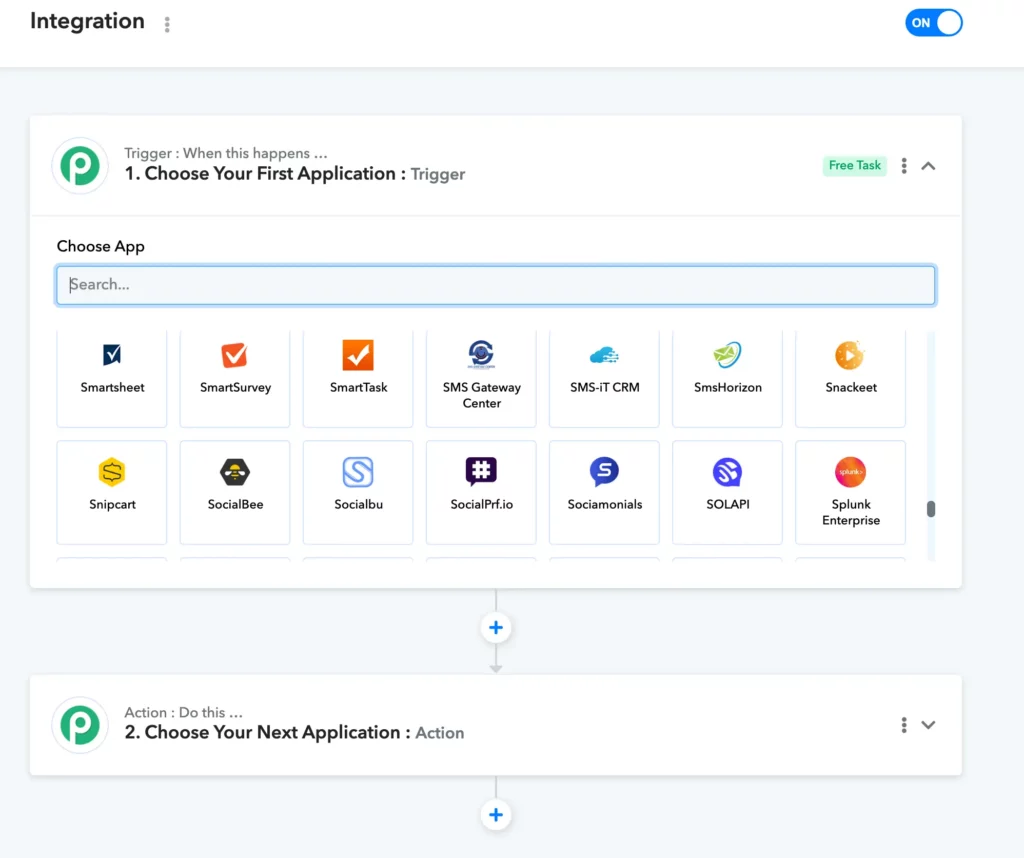
Case Study API Tourism
The Australia government together with the different branches of Regional Tourism run various websites for people wanting to go a holiday or explore an area in order to promote what they can see, where they can stay and what they can do. These sites are usually highly visual and there’s lots of different Sydney, Melbourne based agencies bidding for these regional tourism dollars. Usually though the agencies will try to give it to a local firm. Sometimes it’s the “safe” option for employees of these regional divisions to go with larger providers they know will do a good job and can do the integration of the API they want to make their life easier.
All of the below are pull type scenarios using different methods with the API and a secure token to pull it securly.
Visit Lockhart
Back to the integration, my example of an integration is visitlockhartshire.com.au the site runs various templates and API calls to a database called the ATDW database which has a public API and different methods that can be called with these API’s to get the data your after. The site was originally designed by Angry Ant but all of the integration and the performance side of things done by myself while I owned part of that business. Get Leads today helps to support the Lockhart council in this space and others.
With this site where there is mass summary data or listing data we batch process and store this refreshing it regularly. This makes sense for summary data which with each listing page we get data in real time and it’s surprisingly fast and always up-to date to parse that data into a template.
One extremely important thing to note when it comes to accessibility and government websites is that they must be compliant. We’ll look at this together with integration as we go.
See below some metrics from the Visit Lockhart website.
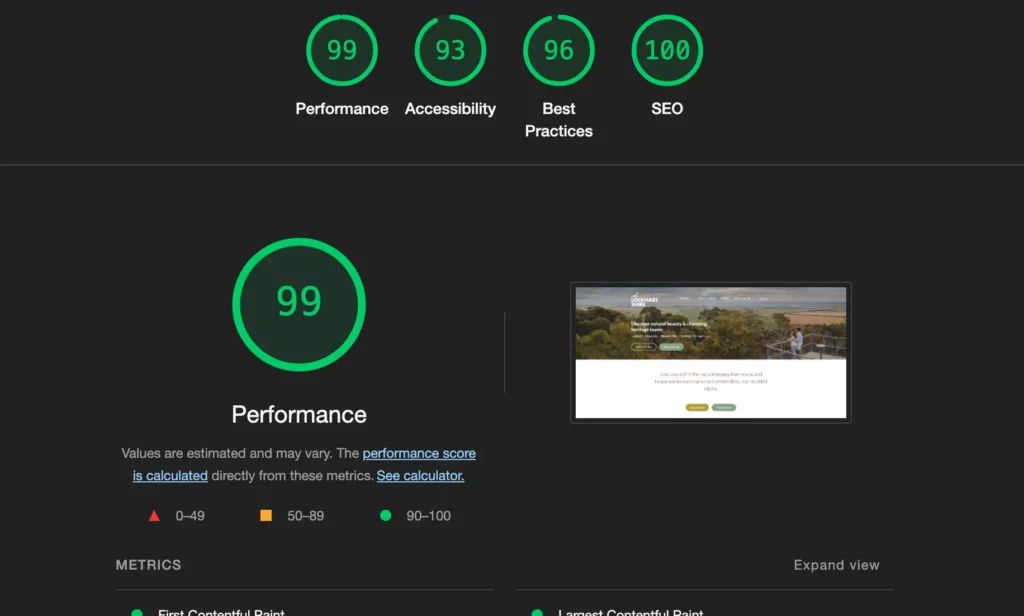
Visit Gundagai
Definitely not one we’ve built, most likely a local web designer in Gundagai.
This is a true example of what not to do that has clearly involved a website designer with no development skills. Visit Gundagai most people will look at and say it’s a nice site. Given the template it’s clear to see it’s a cheap SquareSpace template but the designer has put in lots of work in here and has created themselves a job to create and maintain all the data manually on the site.
The different areas are outlined as:
- Discover
- Eat & Drink
- Stay
- What’s On
This is what we see on all visit websites as navigation. Under the first section discover we see a listing of attractions click on each one and we see static data on a page that has been input in manually and divorced of any changes automatic changes over time.
Oops, the price changed, photo changed and one website says something different to another. There is a massive amount of work that has gone into this site to input the different attractions and have specific landing pages with collections of these. They would have been much better off getting a developer to work with their designer to do a WordPress site even though the web designer wouldn’t of been able to make as much money and wont’ end up with a long term job.
There’s also various other problems here with missing favicons, important missing meta, broken links, page speed issues etc. Designers will tell you none of that matters it’s all about the content and how it looks on their portfolio.
Accessibility, consider it’s SquareSpace it’s surprising it does as well as it does however most websites I see in SquareSpace struggle in the performance and best practice areas typically.
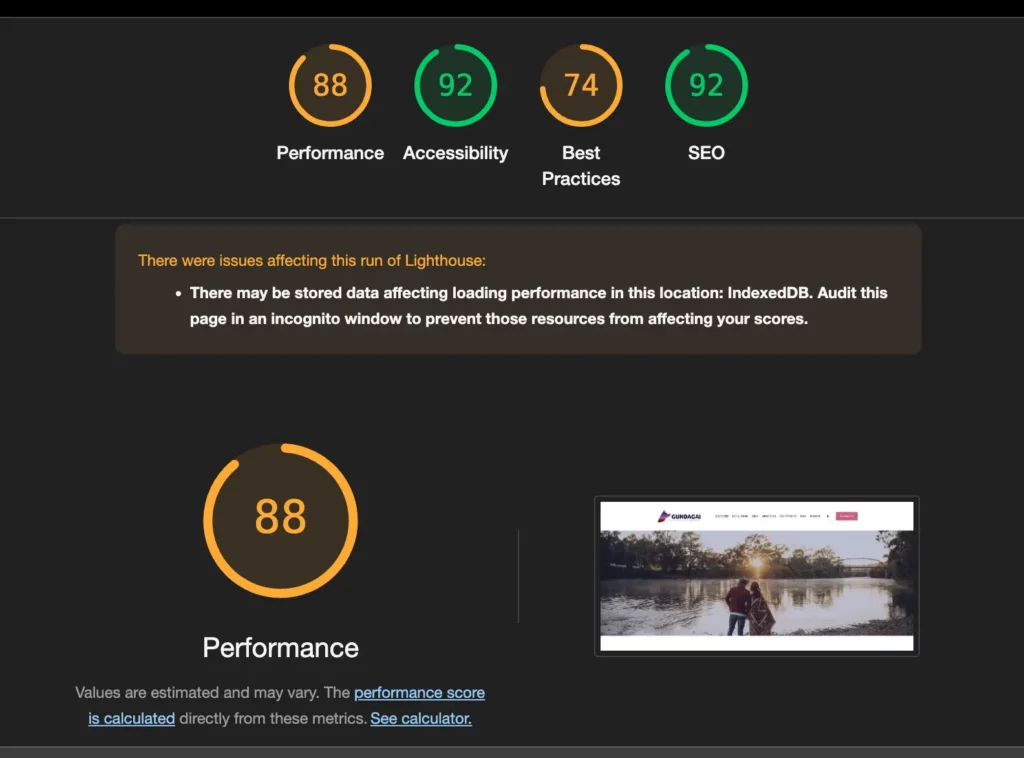
Visit Snowy Valleys (uses a batch load integration)
Let me be clear, this next website is not one we’ve been involved with either but it is one that does things properly. Again we see the same style menu “Food & Drink”, “Stay”, “See & Do”, “Explore”. It’s fast, it uses templates for each page area and pulls data in via a download and store configuration. I know this because I’m lucky enough to work every now and then with the council tourism team.
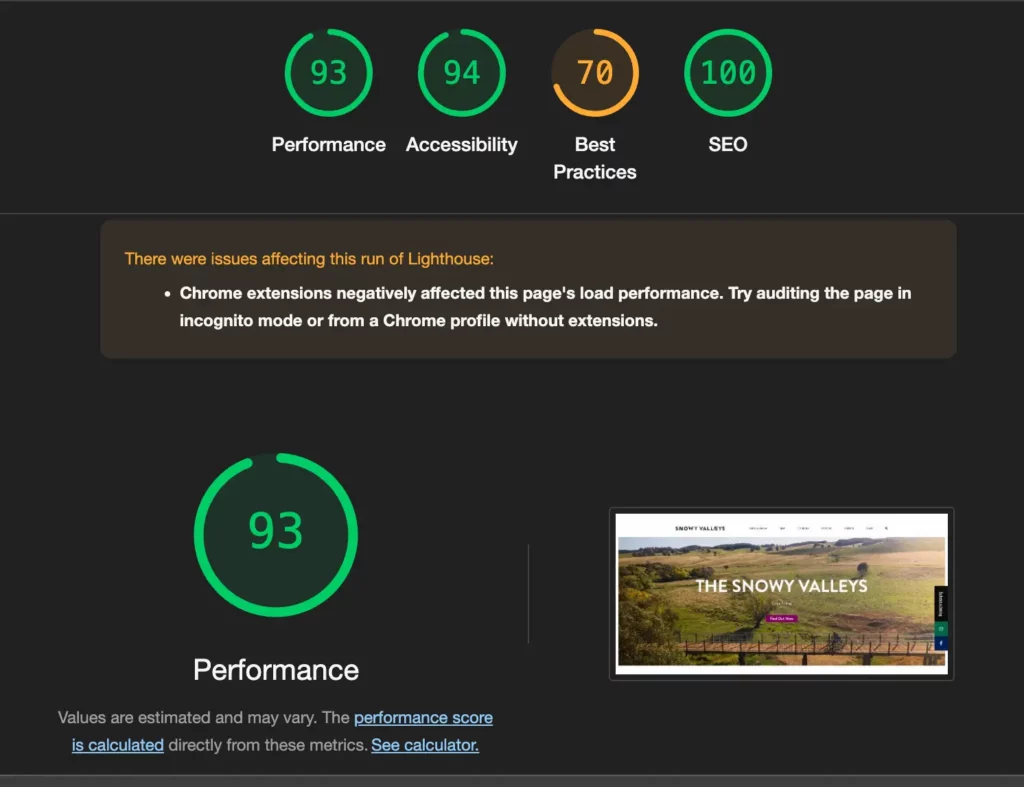
Visit Wagga (live data via Json similar to Lockhart)
This site uses the Squiz based CMS, the issue with integrating with a custom less popular system is always going to be support by vendors. To their credit they have cut some code and pulled in the JSON and decoded it in real time. How much did it cost? I’m speculating here but I’d be surprised if it was less than 50k given the developers are going to be very specialised.
How can I tell it’s using live data? I can see in the URL the parameter for the ATDW item.
https://visitwagga.com/calendar/event?productId=65a9b50f0cdcb4a32ede0997The site is extremely slow though and while integration is good in all areas it has clearly had their marketing team uploading massive images in certain areas.
Another form of integration we see here as with many of the other visit sites is the use of an iFrame to display maps. Visit Wagga though is a little more advanced and uses one that has a specialised overlay complete with categories and search. If you’re getting excited about the mapping integration here don’t be, it’s via an iFrame integration which is using a system called alpaca. Any one of the sites could have used alpaca with next to no effort on their website. Signup, enter the connection or data with ATDW and alpaca does the rest. It’s also likely that theirs a massive ongoing expense here that will never end as long as they’re spending money on the mapping feature. It’s nice, don’t get me wrong and using a specialist integration is often smarter than creating one yourself. Is it worth the expense though? From what I saw on the Alpaca US$ site they could be paying as much as $1000 per month for the feature.
All in all integrations here are good and is far better than a silo download or a SquareSpace build. Kudos.
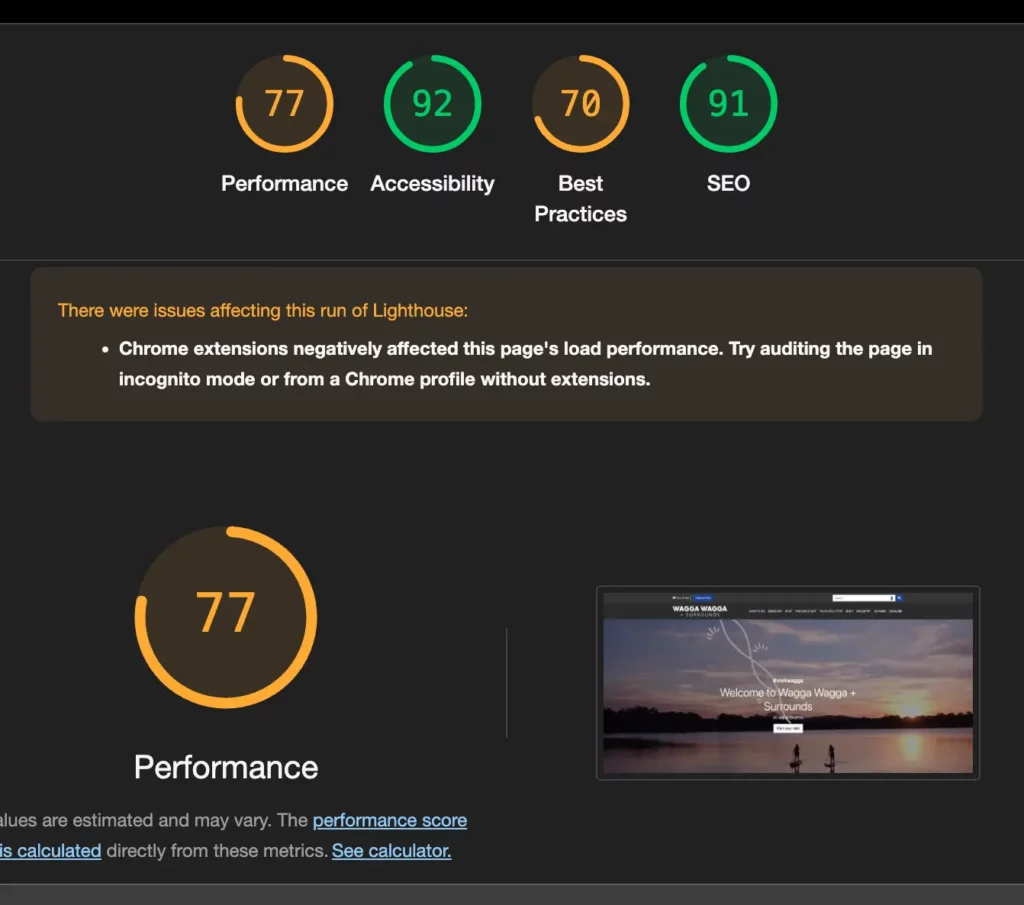
Visit Griffith (batch load )
Visit Griffith is our neighbours in the Riverina area but like Snowy Valleys had their site built by an Agency in Coffs Harbour. The same principals look to apply I would expect. No live data, it’s a batch load style setup. utilising data from ATDW is good, it’s not live though which is bad it’s no where near as good as the SVC based site for any of the Google Core Metrics but does appear to be over 5 years old.
On the upside the animation is nice on the site but on the mobile side it’s barely usable and in my opinion a complete waste of money. Text does not scale and youtube video for the hero should have been replaced with a still with a play button instead of autoplay.
Perfomance metrics below on this one. For a government side, they ignore policy and go with no aria-labels or alt tags on images. Quick and dirty.
We work with many clients in Griffith and happy to help with this area if you’d like things to be done well on the tech side and not only on the Marketing side.
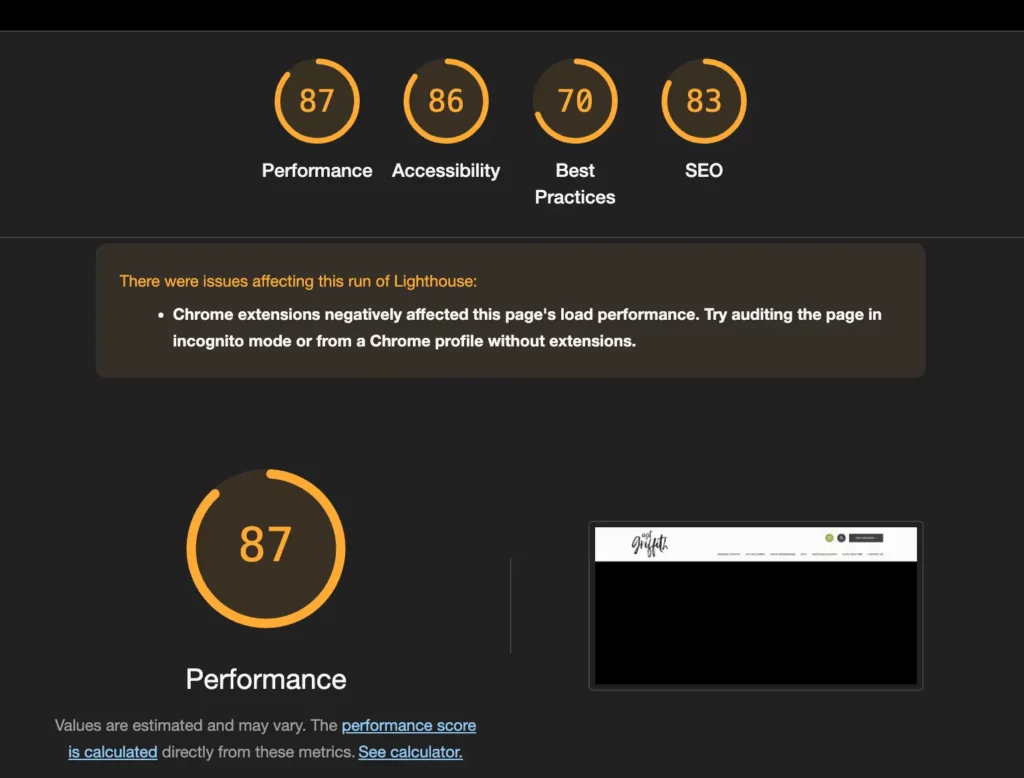
Best or Worst Scenario for WordPress Marketing Agency
The best scenario for website agencies in regional Australia and for the business owners is if the provider has a plugin that can be downloaded and does most of what you need without any custom code or setups to parse data. From our perspective a vendor has this responsibility to their clients to provide this but often we booking systems seeing this area as an opportunity to run their own specialised web design / development agency services.
This is when the regional web designer asks the vendor can I integrate with your system and they tell you no, or it’s too hard or they call the client and provide them a generic template proposal for the same price as what the regional agency would have charged without the custom strategy that should be applied specifically to that business.
Website Integration Conclusion
If you’re a business in Wagga or the Riverina running a website and you need integration done properly while maintaining an effective marketing tool as you can see from the above we’ve probably done it all before and know the best way to do things. We will do an awesome job at presenting you some options as we go that also helps with the budget.






